It’s the end of the year, and given that I’m an advocate for the benefits of reflection, I suppose I better practice what I preach. So what am I thinking I learned as a consequence of this past year? Several things come to mind (and I reserve the right for more things to percolate out, but those will be my 2016 posts, right? :):
- The Revolution is real: the evidence mounts that there is a need for change in L&D, and when those steps are taken, good things happen. The latest Towards Maturity report shows that the steps taken by their top-performing organizations are very much about aligning with business, focusing on performance, and more. Similarly, Chief Learning Officer‘s Learning Elite Survey similarly point out to making links across the organization and measuring outcomes. The data supports the principled observation.
- The barriers are real: there is continuing resistance to the most obvious changes. 70:20:10, for instance, continues to get challenged on nonsensical issues like the exactness of the numbers!?!? The fact that a Learning Management System is not a strategy still doesn’t seem to have penetrated. And so we’re similarly seeing that other business units are taking on the needs for performance support, social media, and ongoing learning. Which is bad news for L&D, I reckon.
- Learning design is rocket science: (or should be). The perpetration of so much bad elearning continues to be demonstrated at exhibition halls around the globe. It’s demonstrably true that tarted up information presentation and knowledge test isn’t going to lead to meaningful behavior change, but we still are thrusting people into positions without background and giving them tools that are oriented at content presentation. Somehow we need to do better. Still pushing the Serious eLearning Manifesto.
- Mobile is well on it’s way: we’re seeing mobile becoming mainstream, and this is a good thing. While we still hear the drum beating to put courses on a phone, we’re also seeing that call being ignored. We’re instead seeing real needs being met, and new opportunities being explored. There’s still a ways to go, but here’s to a continuing awareness of good mobile design.
- Gamification is still being confounded: people aren’t really making clear conceptual differences around games. We’re still seeing linear scenarios confounded with branching, we’re seeing gamification confounded with serious games, and more. Some of these are because the concepts are complex, and some because of vested interests.
- Games seem to be reemerging: while the interest in games became mainstream circa 2010 or so, there hasn’t been a real sea change in their use. However, it’s quietly feeling like folks are beginning to get their minds around Immersive Learning Simulations, aka Serious Games. There’s still ways to go in really understanding the critical design elements, but the tools are getting better and making them more accessible in at least some formats.
- Design is becoming a ‘thing’: all the hype around Design Thinking is leading to a greater concern about design, and this is a good thing. Unfortunately there will probably be some hype and clarity to be discerned, but at least the overall awareness raising is a good step.
- Learning to learn seems to have emerged: years ago the late great Jay Cross and I and some colleagues put together the Meta-Learning Lab, and it was way too early (like so much I touch :p). However, his passing has raised the term again, and there’s much more resonance. I don’t think it’s necessarily a thing yet, but it’s far greater resonance than we had at the time.
- Systems are coming: I’ve been arguing for the underpinnings, e.g. content systems. And I’m (finally) beginning to see more interest in that, and other components are advancing as well: data (e.g. the great work Ellen Wagner and team have been doing on Predictive Analytics), algorithms (all the new adaptive learning systems), etc. I’m keen to think what tags are necessary to support the ability to leverage open educational resources as part of such systems.
- Greater inputs into learning: we’ve seen learning folks get interested in behavior change, habits, and more. I’m thinking we’re going to go further. Areas I’m interested in include myth and ritual, powerful shapers of culture and behavior. And we’re drawing on greater inputs into the processes as well (see 7, above). I hope this continues, as part of learning to learn is to look to related areas and models.
Obviously, these are things I care about. I’m fortunate to be able to work in a field that I enjoy and believe has real potential to contribute. And just fair warning, I’m working on a few areas in several ways. You’ll see more about learning design and the future of work sometime in the near future. And rather than generally agitate, I’m putting together two specific programs – one on (e)learning quality and one on L&D strategy – that are intended to be comprehensive approaches. Stay tuned.
That’s my short list, I’m sure more will emerge. In the meantime, I hope you had a great 2015, and that your 2016 is your best year yet.
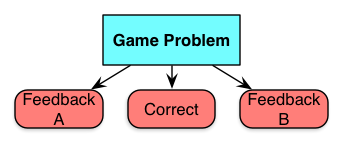
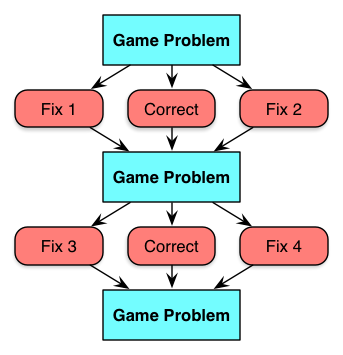

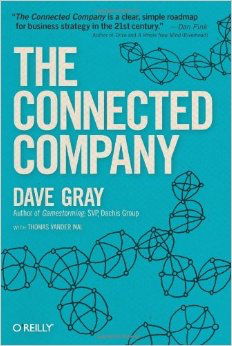
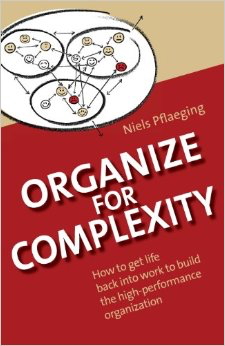
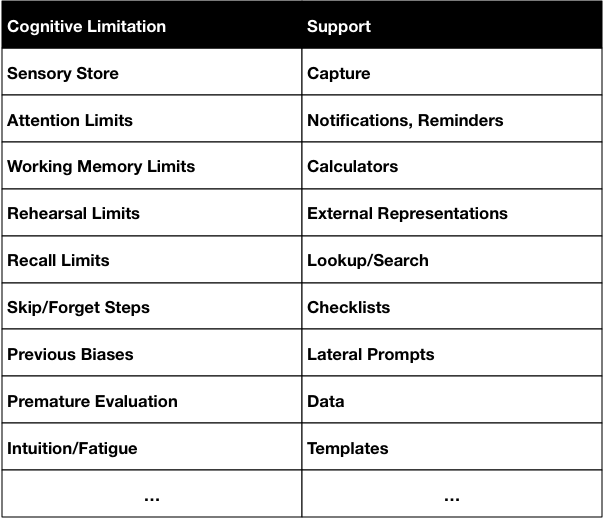 So, for instance, our senses capture incoming signals in a sensory store. Which has interesting properties that it has almost an unlimited capacity, but for only a very short time. And there is no way all of it can get into our working memory, so what happens is that what we attend to is what we have access to. So we can’t recall what we perceive accurately. However, technology (camera, microphone, sensors) can recall it all perfectly. So making capture capabilities available is a powerful support.
So, for instance, our senses capture incoming signals in a sensory store. Which has interesting properties that it has almost an unlimited capacity, but for only a very short time. And there is no way all of it can get into our working memory, so what happens is that what we attend to is what we have access to. So we can’t recall what we perceive accurately. However, technology (camera, microphone, sensors) can recall it all perfectly. So making capture capabilities available is a powerful support. This is similar to the way I’d seen Palm talk about the
This is similar to the way I’d seen Palm talk about the